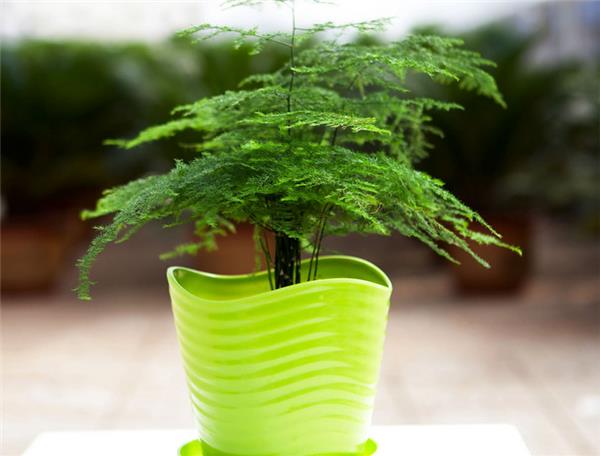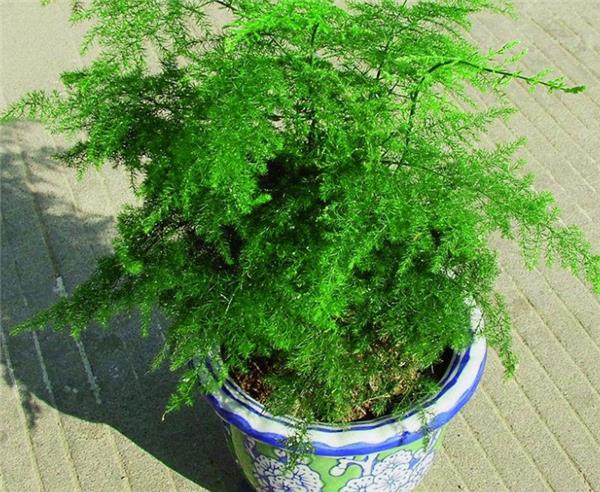A brief introduction to the culture methods of full-blown flowers and asparagus
What are the breeding methods of asparagus? This is a problem that many flower friends are more concerned about. Asparagus symbolizes eternity, and the pure heart of friends will never change. Asparagus branches are jointed like bamboo, and the posture is elegant and chic, the leafy branches are slender and beautiful, dense as feathery, and the green clouds layer upon layer do not have high requirements for the culture environment. How to cultivate such a beautiful asparagus? Let's take a look at the breeding methods of asparagus.

1. Brief introduction of asparagus
Asparagus, also known as Pinus elliottii, Pinus elliottii, Phyllostachys pubescens, is a perennial evergreen vine foliage plant, a famous ornamental plant. Asparagus is a plant of the genus asparagus of Liliaceae. It is mainly seen in potted plants and is also an important leaf-cutting material.
Its energy is incredible. It can cure diseases and absorb harmful substances. Asparagus, also known as Pinus elliottii, Pinus elliottii, Phyllostachys pubescens, is a perennial evergreen vine foliage plant, a famous ornamental plant. Asparagus is a plant of the genus asparagus of Liliaceae, which is used as a root medicine to treat acute tracheitis and cough, and has the function of moistening the lung. It is mainly used to observe leaves in potted plants, and it is also an important leaf-cutting material. Asparagus can not only improve cultural accomplishment, but also regulate people with liver disease, depression and depression. Asparagus can not only absorb harmful gases such as sulfur dioxide, nitrogen dioxide and chlorine at night, but also secrete gases that kill bacteria and reduce the occurrence of infectious diseases such as colds, typhoid and laryngitis, which is of great benefit to human health.
It has a graceful body and a charm to deploy other plants. Branches are jointed like bamboo, and elegant and unrestrained posture, hence the name asparagus. Its leafy branches are slender and beautiful, dense like feathers, green clouds layer upon layer, elegant plant shape, unique charm, deeply loved by people, is a famous indoor foliage flower. The best ornamental age of asparagus is 1-3 years, during which the branches and leaves are luxuriant and the posture is intact. However, even if it is a small plant that has only grown for a few months, its several scattered branches and leaves can form a group of very ideal composition and beautiful shape.

2. Culture methods of asparagus
1. Potted soil: fertile sandy loam should be used to cultivate asparagus, which should be warm and humid, rich in rotten branches and good drainage. Generally, it can be prepared in the proportion of 4 parts of garden soil, 2 parts of rotten leaf soil, 2 parts of compost soil and 1 part of sand. And to change the soil regularly to add fertilizer. If excessive fertilization causes "watering roots", it is necessary to pour the pot to remove the fertilizer, irrigate the soil with clean water, and then put it into the new soil for breeding.
2. Watering: watering is the key point of asparagus cultivation and culture. too much watering and too wet basin soil can easily cause root rot, and too little watering will lead to scorched and yellowed leaf tips. Therefore, in the process of watering, it depends on the weather, growth and the dry and wet condition of the basin soil, so that if it is not dry, it will be watered thoroughly. When the weather is hot and dry, water spraying can be used to humidify and cool the leaves, but less watering is needed in winter.

3. Fertilization: asparagus is not good at fertilizer, but it can not be short of fertilizer. Limited by potted soil, asparagus culture must replenish nutrients in time to meet the growth requirements. In the process of fertilizing asparagus, it is necessary to apply more times and less amount, and do not apply thick fertilizer, otherwise it will cause leaf yellowing. Generally, you can choose to apply rotten thin liquid fertilizer once a month, and after the plant grows and finalizes, you can properly control and reduce fertilization.
4. Lighting: asparagus culture can not be exposed to the hot sun, hot season, should be placed in a cool and ventilated place. At the same time, asparagus flowering is not only afraid of wind, but also afraid of rain, should pay attention to good ventilation, good weather can be properly placed outside to receive sunlight. The temperature of potted asparagus in winter should be kept above 5 ℃ to avoid freezing.
5. Display: asparagus is mostly used for indoor desk decoration. Because asparagus is afraid of smoke and dust, if toxic gases are encountered, the branches and leaves are easy to yellow. therefore, asparagus should be placed in a clean and well-ventilated environment.

Through the introduction of the culture methods of asparagus above, do you know how to cultivate asparagus? Asparagus has a certain literary and artistic flavor, put in the living room will improve the master's taste of life, like asparagus, what are you waiting for? Let's breed a pot.
Related
- Wuhan Hospital Iron Tree Blooming Result Was Instantly Frightened by the Gardener Master
- Which variety of camellia is the most fragrant and best? Which one do you like best?
- What is the small blue coat, the breeding methods and matters needing attention of the succulent plant
- Dormancy time and maintenance management of succulent plants during dormancy
- Minas succulent how to raise, Minas succulent plant pictures
- What are the varieties of winter succulent plants
- How to raise succulent plants in twelve rolls? let's take a look at some experience of breeding twelve rolls.
- Attention should be paid to water control for succulent plants during dormant period (winter and summer)
- Watering experience of twelve rolls of succulent plants
- Techniques for fertilizing succulent plants. An article will let you know how to fertilize succulent plants.



